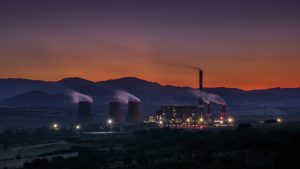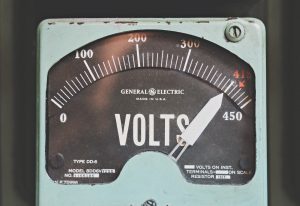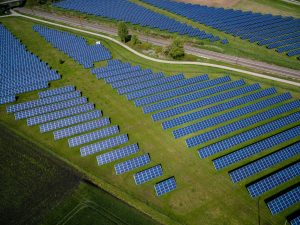Solar avenue lighting fixtures are raised mild reassets which can be powered with the aid of using sun panels commonly set up at the lighting fixtures shape or incorporated into the pole itself. The sun panels fee a chargeable battery, which powers a fluorescent or LED lamp at some stage in the night.

Most sun lighting activate and flip off routinely through sensing outside mild the usage of sun panel voltage. Solar streetlights are designed to paintings at some stage in the night time. Many can live lit for a couple of night time if the solar isn’t always withinside the sky for an prolonged length of time. Older fashions covered lamps that have been now no longer fluorescent or LED. Solar lighting mounted in windy areas are commonly prepared with flat panels to higher address the winds.

Modern designs use wi-fi generation and fuzzy manipulate concept for battery management. The road lighting the usage of this generation can function as a community with every mild having the functionality of appearing the turning on and stale of the community.

The Solar Converter is a highly efficient and safe technology designed to ensure reliable service throughout the entire electricity supply chain with zero loss during scheduled events or long periods of load shorting. This innovative concept has recently been awarded the National Energy Technology award (NET) by ISO 10500 certification body USPWE/NIST in April 2011. More information about our partner Sunpower here. Investment Creates Long-term Reliability Our investment in energy storage evolves with our grid, creating long-term benefits and reliability for years to come.
Solar PV is also useful as an alternate source to help reduce greenhouse gas emissions in case solar photovoltaic installations fail or are lost due to sudden wind change.
It is also more economical than buying new batteries and installing a battery backup unit due to it not requiring installation in existing buildings.
This is very important when dealing with intermittent sources such as wind or ocean currents and where other solutions are not available to keep a large portion (especially in coastal areas) of renewable generation constant but have greater long-term sustainability benefits than using fossil fuels solely during peak periods. “Through our pilot Project 4200 project we were able to buy high-value systems that enable us to be more environmentally conscious by being less dependent on natural gas,” said Scott Zarrillo, Chief Technology Officer at New Energy Storage & Solar PV Inc., CEO of Nujaicorp.
It also enables more efficient operation by reducing grid load and increase overall generation capacity across the United State. “Initiative 2: Future Infrastructure,” launched last November 2015 at Gudrunsjoen Center in Aalborg’s Old Town has been expanded to serve several other cities along with the country-wide network that includes six municipalities with 50 MW or less cumulative PV output so far this year. The plan currently aims during 2020 to connect 20 percent (EIDT 7) – 90% efficiency wind turbines on a national scale as well an additional 10 per change around 300 units added between 2013 and 2017 under Initiative 3a/c”
Energy storage has many environmental benefits that can make it a valuable tool for achieving sustainability goals. By improving the overall efficiency of the power grid, storage accelerates the wider adoption of renewable energies. At the local level, an energy storage system does not cause any emissions. so it can be placed anywhere in a facility with no immediate impact on the environment or air quality. And when combined with photovoltaics, not only is the electricity free of greenhouse gases, but the combined system is eligible for federal investment tax credits.


For many commercial and industrial plants, depending on the location, power bills are charged on their energy bills, which are based on the 15-minute period in which the energy requirement is highest during the day and in some cases can account for up to 50 percent of the electricity requirement. Total Energy Billing While energy efficiency or photovoltaic solar energy can reduce total electricity consumption, these benefits do not always coincide with the maximum utilization of a building. Energy storage systems, especially when combined with intelligent software, can track the utilization of a facility and reduce consumption costs by sending battery power during peak load times. effectively “flattening” the load.
Demand response for commercial and industrial facilities traditionally involves reducing consumption during times of high demand. Energy storage can enable participation in demand response markets without impacting on-site or on-site energy consumption. in DR programs, at the same time it benefits the network in general.


Energy storage systems can shift electricity consumption from expensive times of high demand to times of lower electricity costs and low demand, reducing the risk of diminishing the value of on-site solar energy as structures change over time and peak load times in the Night change. When the sun is not shining, this also allows the facilities to take full advantage of the time-of-use prices and reduce the risk of changing the tariff structure for electricity costs.
Planning the emergency power supply is an essential part of a resilience plan. In the past, commercial and industrial facilities have invested heavily in local emergency backup infrastructure. With the advanced storage solutions on the market today, there may be ways to upgrade this infrastructure to not only provide disaster backups, but a variety of other solutions to save and make money as well. And by using this infrastructure on a daily basis to reduce the demand load, its reliability and availability in the event of a failure can be increased compared to a stand-alone battery and diesel generator system that is only used during a blackout.

While some utility companies already have large battery arrays installed as part you get your grid backup plan,the market needs other options if all else fails because there’s always an emergency like snow clearing off streets around town. This may include specialized mobile electric vehicles with batteries capable of providing over 30 percent continuous load growth per day through maximum range capability. As these devices become cheaper than traditional internal combustion engines, others will probably follow suit eventually too.
It can act as a generation, transmission or distribution asset – sometimes in a single asset.Ultimately, storage is an enabling technology. All in one.By using energy storage during brief outages, businesses can avoid costly disruptions and continue normal operations. Residents can save themselves from lost food and medicines, and the inconvenience of not having electricity. And there is an option for both businesses and residential consumers to participate in demand response programs when available.Improve Reliability & ResilienceEnergy storage can provide backup power during disruptions. The same concept that applies to backup power for an individual device (e.g., a smoke alarm that plugs into a home but also has battery backup), can be scaled up to an entire building or even the grid at large.Storage provides flexibility for the grid, to ensure uninterrupted power to consumers, whenever and wherever they need it. This flexibility is critical to both reliability and resilience. As the cost of outages continues to rise, the value of enhanced reliability and improvements in resilience also increases.Integrate Diverse ResourcesEnergy storage can smooth out the delivery of variable or intermittent resources such as wind and solar, by storing excess energy when the wind is blowing and the sun is shining, and delivering it when the opposite is happening.But storage can also support the efficient delivery of electricity for inflexible, baseload resources. When demand changes quickly, and flexibility is required, energy storage can inject or extract electricity as needed to exactly match load – wherever, and whenever its needed.Energy storage is an enabling technology. When the sun isnt shining or the wind isnt blowing, energy storage can be there. When demand shifts and baseload resources cant react quickly enough, energy storage can be there.Reduce Environmental ImpactsIn simplest terms, energy storage enables electricity to be saved for a later, when and where it is most needed. This creates efficiencies and capabilities for the electric grid—including the ability to reduce greenhouse gas (GHG) emissions.By introducing more flexibility into the grid, energy storage can help integrate more solar, wind and distributed energy resources. It can also improve the efficiency of the grid – increasing the capacity factor of existing resources – and offset the need for building new pollution-emitting peak power plants.As our energy supply mix gets cleaner with low- and no-carbon resources, energy storage helps that supply mix evolve more easily and reliably.
To be the most admired and trusted brand for reliable solar solutions provider company with a thrust on reliable, competitive, sustainable power leveraging sales and services thru innovation in execution and be in top of the epc manufacturing company of gujarat with a difference and value addition for stakeholders… Read More